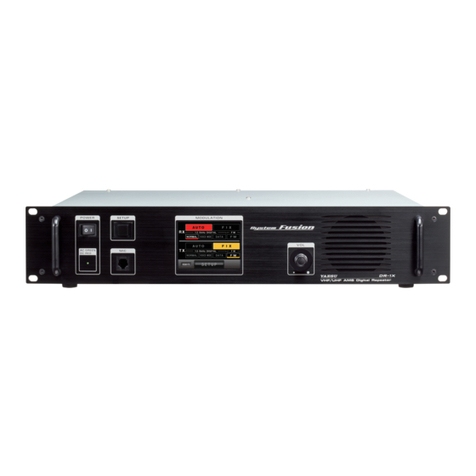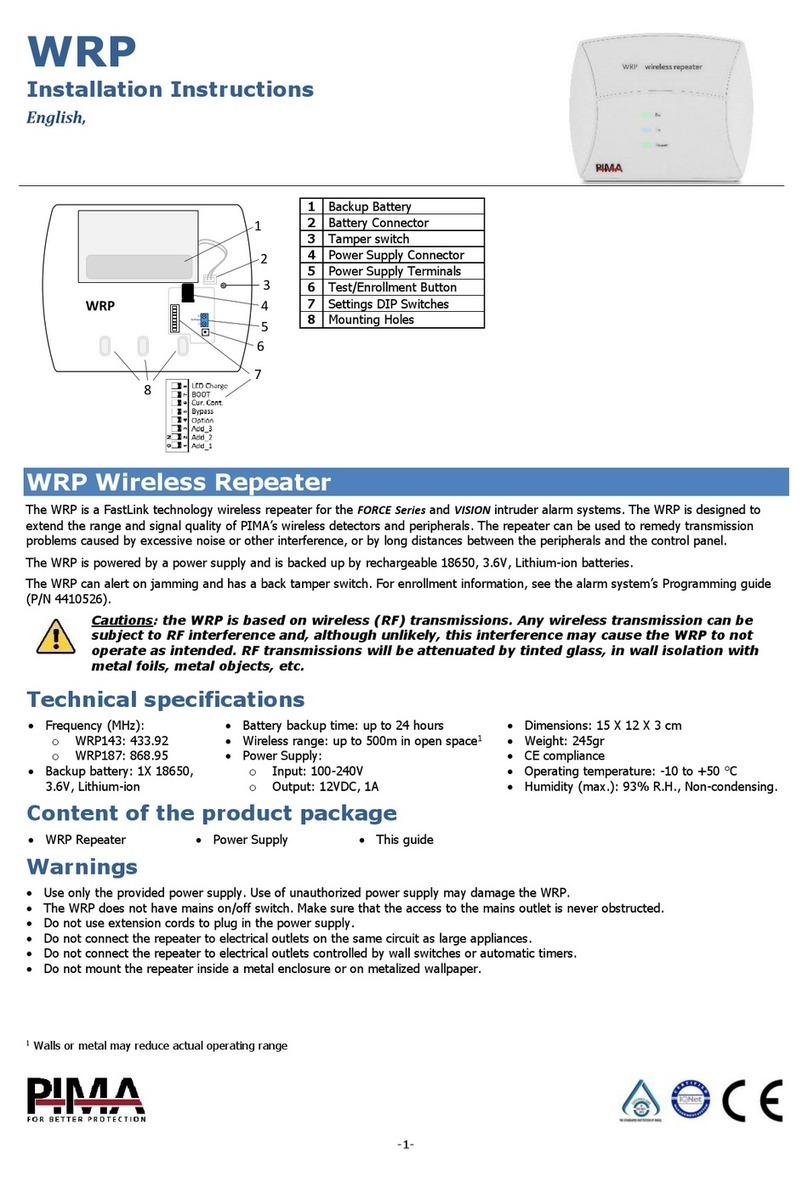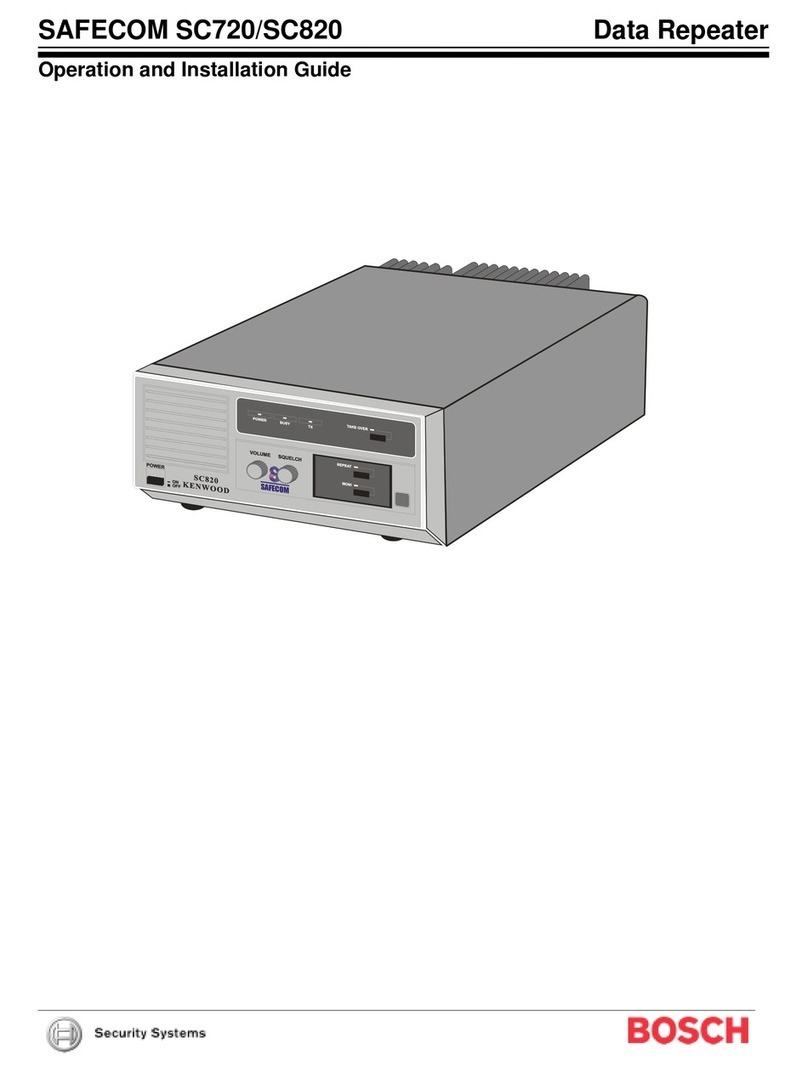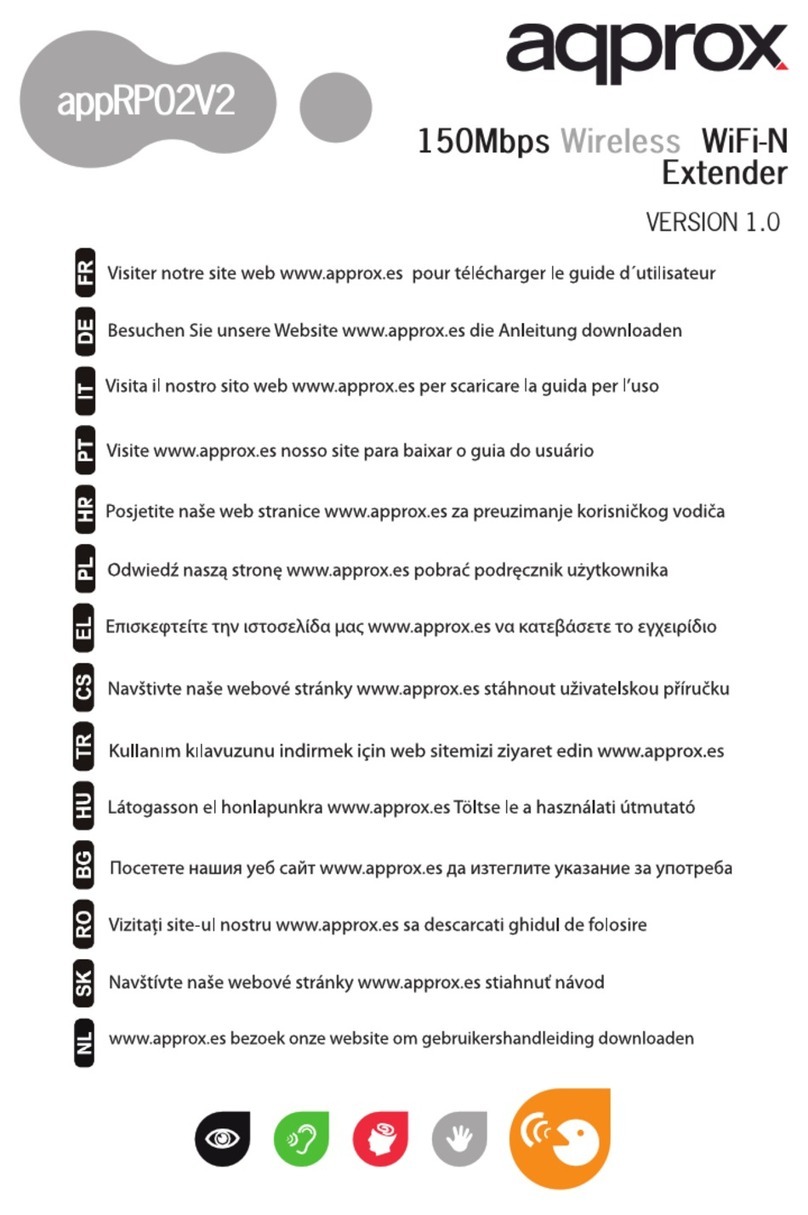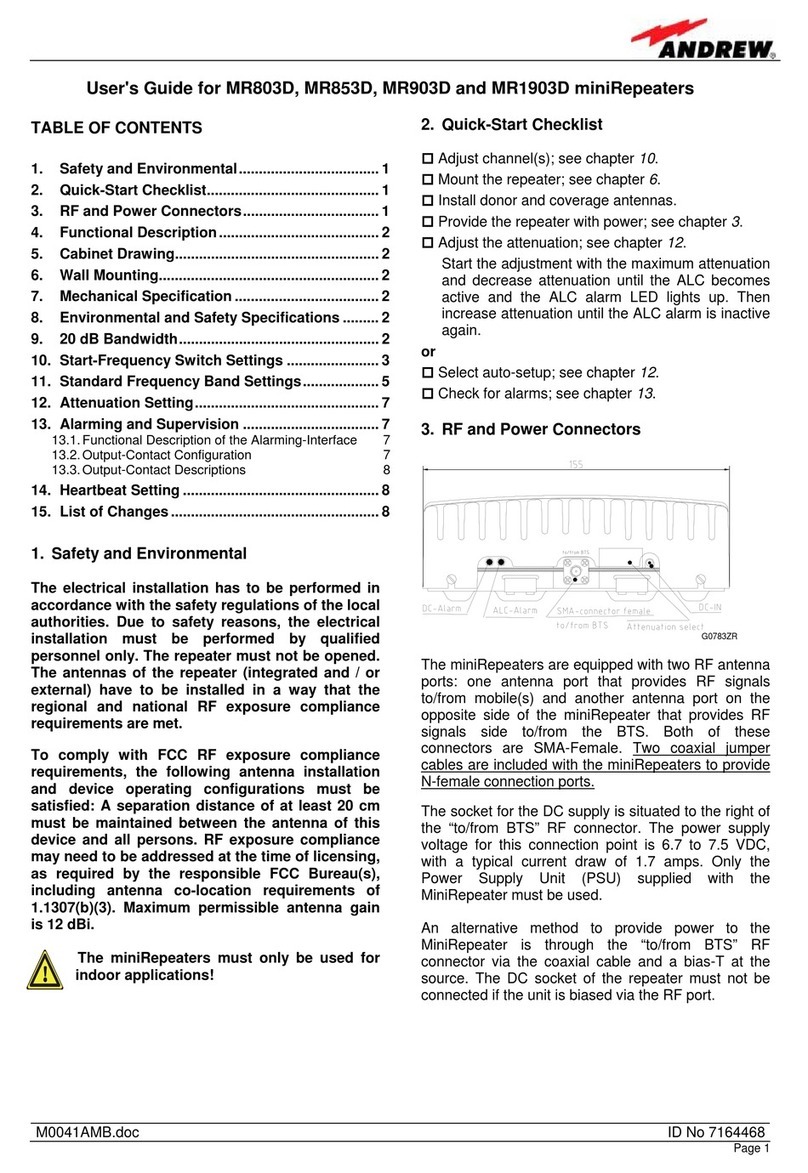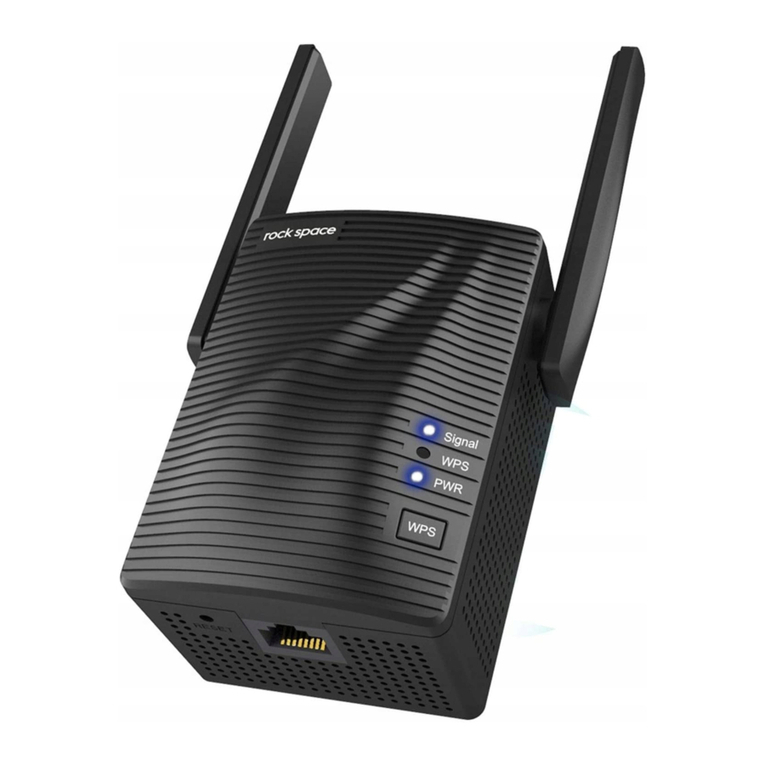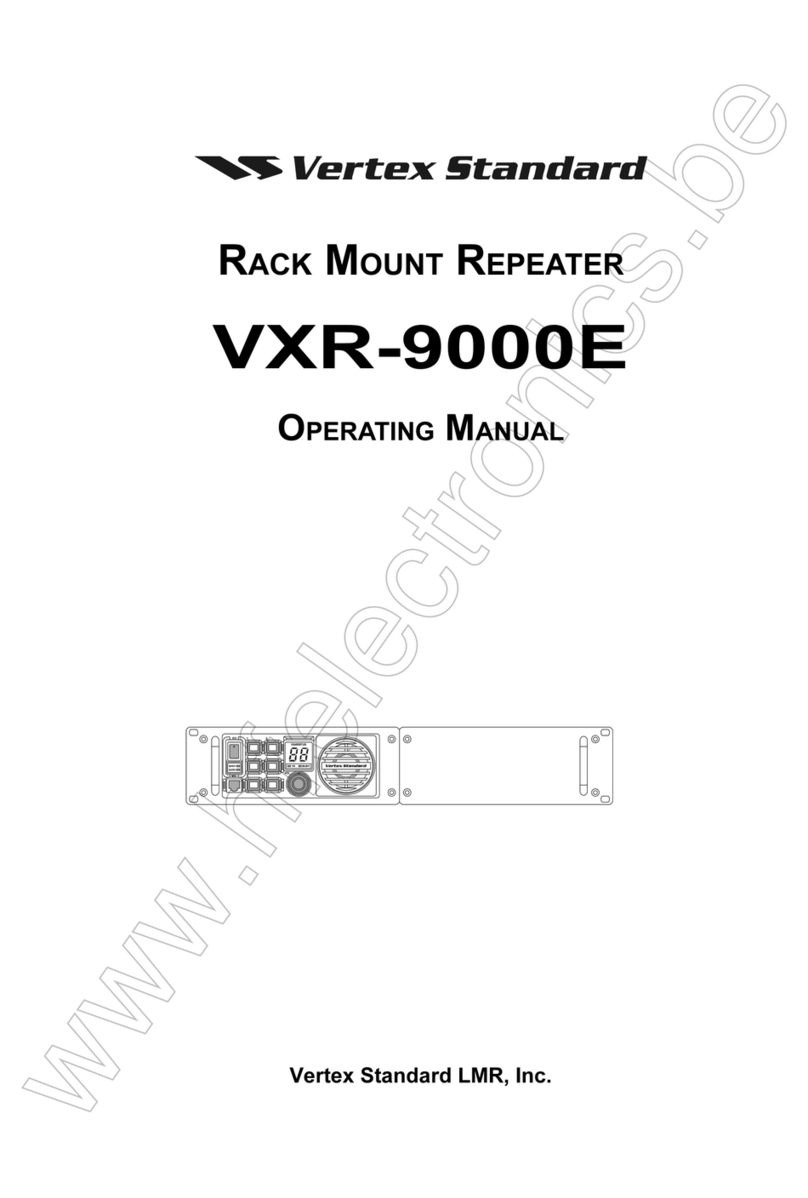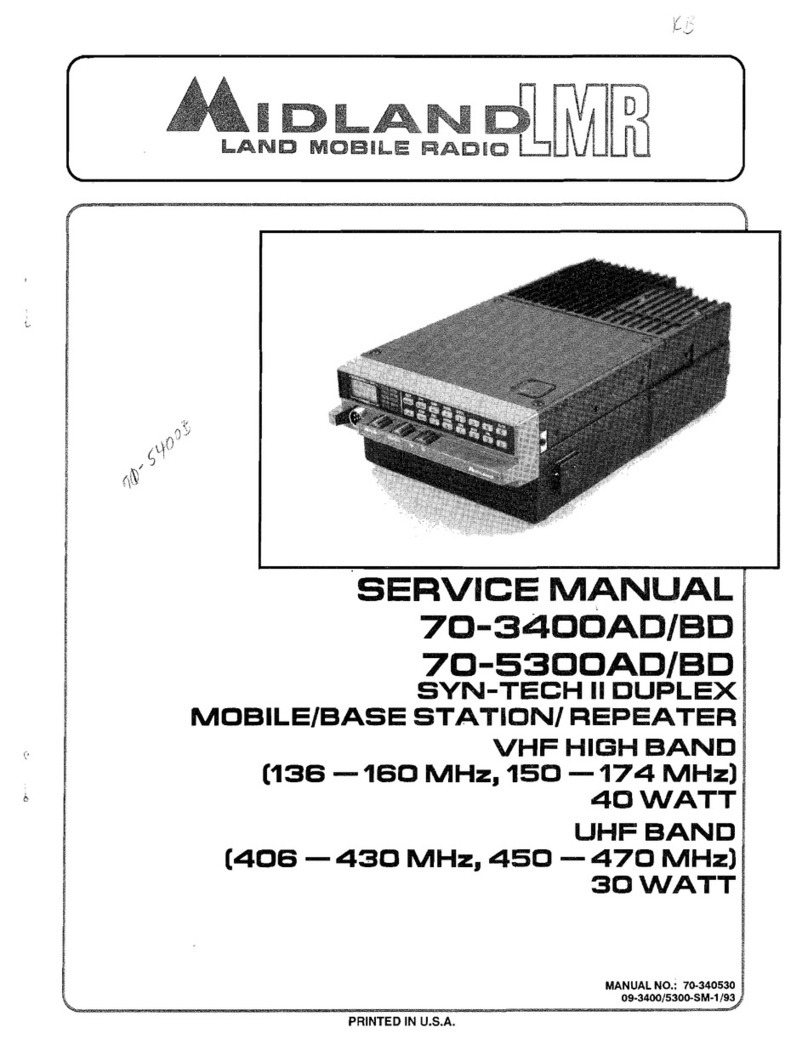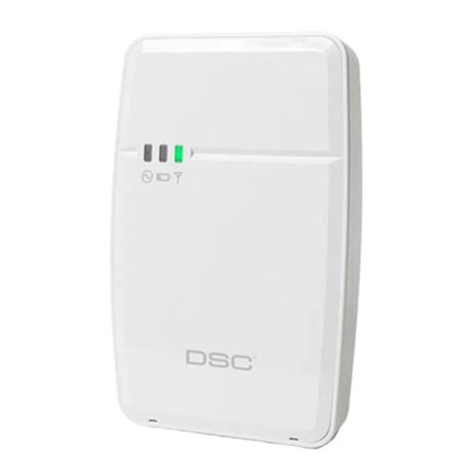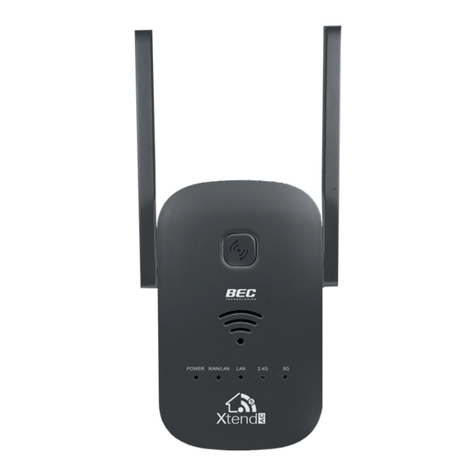ETC Paradigm P-REP-RM User manual

ETC Setup Guide
Paradigm Rack-mount Repeater
Corporate Headquarters Middleton, WI, USA +1 608 831 4116 London, UK +44 (0)20 8896 1000
Holzkirchen, DE +49 (80 24) 47 00-0 Rome, IT +39 (06) 32 111 683 Hong Kong +852 2799 1220 Paris, FR +33 1 4243 3535
Web etcconnect.com Support support.etcconnect.com Contact etcconnect.com/contactETC
© 2019 Electronic Theatre Controls, Inc. Trademark and patent info: etcconnect.com/ip
Product information and specifications subject to change. ETC intends this document to be provided in its entirety.
7182M2261 Rev C Released 2019-07
The Paradigm Rack-mount Repeater adds support for more architectural control stations in the Paradigm
system.
The addition of a Rack-mount Repeater single model extends the station communication bus (LinkConnect)
length by 1,640 ft (500 m) and the Dual Station Repeater extends the station communication bus into two
segments of LinkConnect. Each repeater module type supports an additional 30 Paradigm control stations
or sensors on the topology-free and polarity-independent control network, and provides additional
auxiliary power for up to six Paradigm touchscreens. Station device counts cannot exceed the total capacity
allowed for the Paradigm system.
The installation procedure for the single and dual repeater models is identical.
Installation
1: Locate the included rack mounting hardware kit including the mounting screws and washers.
2: Use the hardware provided to mount the unit to the mounting rails in your equipment rack.
Power and Control Wiring
All power and control wire terminations are made to the rear panel of the unit.
AC Input
Single phase 115 VAC, 230 VAC, or 240 VAC power input to the IEC connector.
Single and Dual Repeater
models available.

ETC Setup Guide
Rack-mount Repeater
Rack-mount Repeater Page 2 of 4 ETC
LinkConnect
Paradigm architectural controls communicate with the Paradigm Architectural Control Processor (P-ACP)
using the LinkConnect station communication bus. LinkConnect is based on Echelon®LonWorks®with
LinkPower. Throughout this document, LinkPower will be referred to as the signal power on the
LinkConnect data run.
Termination is available on the rear panel of the Rack-mount Repeater for up to six LinkConnect data runs
utilizing Belden 8471 (or approved equal) and a separate connection for the repeater connection to the
DRd or ERn enclosure that hosts the initial Station Power Module (P-SPM) and the P-ACP.
ESD Ground
Architectural controls must be grounded. ETC recommends running the LinkConnect wires through
grounded metal conduit or pulling an additional 14 AWG (2.5 mm2) ESD ground wire per LinkConnect data
run. ESD ground wires terminate to the provided ground bar on the rear panel of the Rack-mount
Repeater.
Auxiliary Power
The auxiliary power connector (labeled Aux Power) provides termination for up to 20 wires in the
eight-position pluggable connector. Each terminal accepts up to two 16 AWG (1.5 mm2) wires (typically a
red and black wire pair) and provides 24 VDC power to compatible architectural controls. Auxiliary wires
are topology-free. The maximum auxiliary wire run is dependant by the wire gauge and the distribution of
auxiliary load (determined per the installation). The auxiliary supply is capable is of 36 W (1.5 A at 24 VDC).
Terminate Wiring
LinkConnect
Requires a LinkConnect control run from the right I/O board in the DRd or ERn enclosure that houses the
Paradigm Station Power Module (P-SPM) and a minimum of one control run (or more as desired) from the
Rack-mount Repeater to the architectural controls (stations and sensors).
From Station Power Module
1: Pull a single run of Belden 8471 (or approved equal) control wiring to the rear panel from the
associated right I/O board housing the P-SPM.
2: Strip 4.8 mm (3/16”) of insulation from the ends of each wire pair.
3: Remove the two-pin connector (labeled “LON IN”) from J2 on the rear panel.
4: Loosen the terminal screws and insert the wires into the terminals.
• Insert the white (typical) wire from the pair into the “A” terminal on the connector. Tighten the
screw firmly to secure the wire into the terminal.
• Insert the black (typical) wire from the pair into the “B” terminal on the connector. Tighten the
screw firmly to secure the wire into the terminal.
5: Replace the connector to the rear panel.
Note:
LinkConnect wiring is topology-free and polarity-independent, you can install your data
runs in any desired combination of bus, star, loop, and home run. The total combined
length of the wire run cannot exceed 1,640 ft (500 m), with a maximum distance of
1,313 ft (400 m) between any two un-repeated communicating devices.
Note:
All Class 2 low voltage control cables must run in separate conduit from power wires.

ETC Setup Guide
Rack-mount Repeater
Rack-mount Repeater Page 3 of 4 ETC
6: Pull a single ESD ground wire from the ground bar on the DRd or ERn enclosure if LinkConnect wiring
is not installed in grounded metal conduit. ESD ground wires terminate to the ground bus located on
the rear panel.
From Repeater to Architectural Controls
1: Pull Belden 8471 (or approved equal) control wiring to the rear panel.
2: Strip 4.8 mm (3/16”) of insulation from the ends of each wire pair.
3: Remove the 12-position connector (labeled LON) from the rear panel of the Rack-mount Repeater.
The LON connector is labeled to indicate that the connector
is split between two LON segments (1 and 2). This is
important only when installing the Dual Station Repeater
(P-DREP) and two separate control segments are required. A
single Station Repeater (P-REP) installation can utilize all
available positions as LinkConnect home runs which
connect to a single control segment.
4: Loosen the terminal screws for the wire pairs you are terminating.
5: Insert each white (typical) wire from the pairs into a “A” terminal on the connector and tighten the
screw(s) firmly to secure the wire into the terminal.
6: Insert each black (typical) wire from the pairs into a “B” terminal on the connector and tighten the
screw(s) firmly to secure the wire into the terminal.
7: Replace the connector to the rear panel.
8: For each LinkConnect control run not installed in grounded metal conduit, terminate an ESD ground
wire (14 AWG (2.5 mm2) to the ground bus bar located on the rear panel.
Terminate Auxiliary Power
Auxiliary power is required when you are installing powered Paradigm architectural controls.
The auxiliary power connector (labeled Aux Power) provides
termination for up to 20 wires in the 10-position pluggable
connector. Each terminal allows up to two 16 AWG wires.
1: Pull auxiliary control power wiring (typically a red/black wire pair) to the Rack-mount Repeater.
2: Strip 4.8 mm (3/16”) of insulation from the ends of each wire pair.
3: Remove the auxiliary power connector from the rear panel.
4: Loosen the terminal screws for the auxiliary wire pairs you are terminating.
5: Insert the black (typical) auxiliary power wire from the pair into a “-” terminal on the connector and
tighten the screw(s) to secure the wire into the terminal.
6: Insert the red (typical) auxiliary power wire from the pair into a “+” terminal on the connectors and
tighten the screw(s) to secure the wire into the terminal.
7: Replace the connector to the rear panel.
Final Installation
1: Connect the provided power cord to the IEC receptacle and supply power to the unit.
2: Check status indicators for faults.
B A B A B A B A B A B A
1 2
- + - + - + - + - +

ETC Setup Guide
Rack-mount Repeater
Rack-mount Repeater Page 4 of 4 ETC
Status Indicators
When power is applied to the Station Repeater Module, the LEDs located on the front panel will illuminate,
indicating the status of the auxiliary power, LinkConnect control network, and connected architectural
controls.
The Aux Power and LinkPower LEDs indicate in green when the module is connected properly and auxiliary
power and LinkPower are present.
• When there is an imbalance in LinkPower on the LinkConnect control run, the fault indicators
illuminate. This condition typically means that the station wiring has a fault, however it could mean
a connected device is having an issue. A qualified technician should inspect the system wire and
terminations first, then proceed to disconnecting devices to pinpoint the fault and correct it. The
power supply will update the fault indicators automatically when the fault condition is cleared.
• If the NET A line has a fault (is shorted or has leakage to ground), the Fault + LED lights.
• If the NET B line has a fault (is shorted or has leakage to ground), the Fault - LED lights.
• If neither fault LED is illuminated the data connections are properly installed and the stations are
receiving the data and power required for operation.
Table of contents
Popular Repeater manuals by other brands
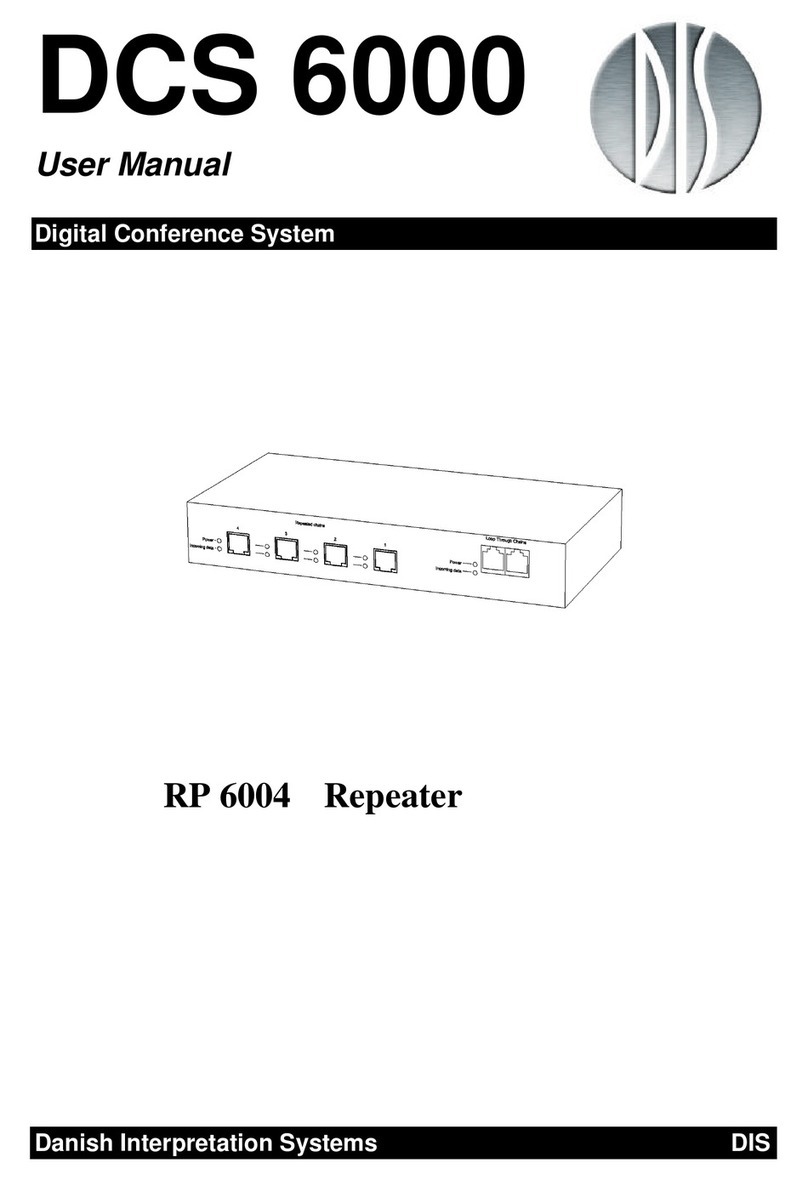
Danish Interpretation Systems
Danish Interpretation Systems DCS 6000 user manual
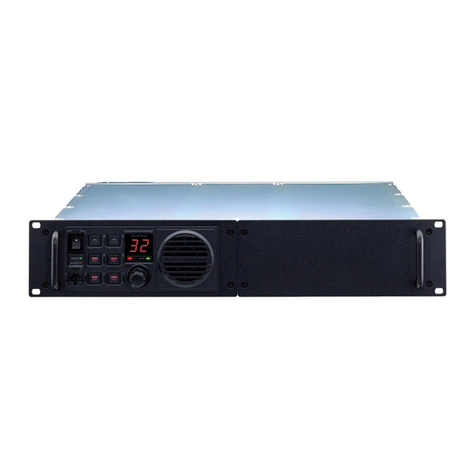
Vertex Standard
Vertex Standard VXR-9000 Series Service manual
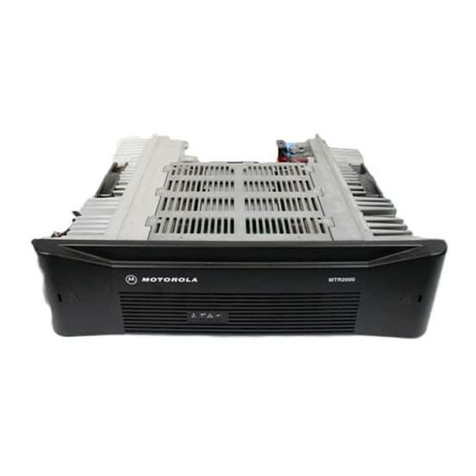
Motorola
Motorola MTR2000 Instruction / Field Service Manual
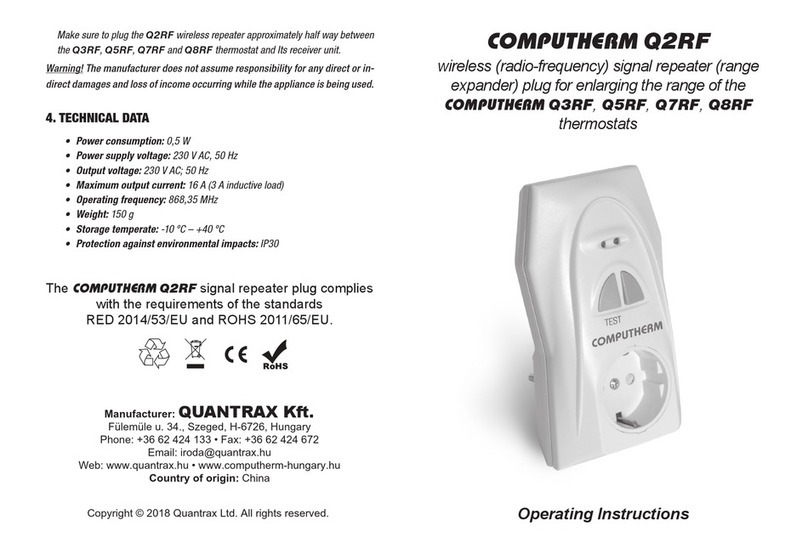
Computherm
Computherm q3rf operating instructions
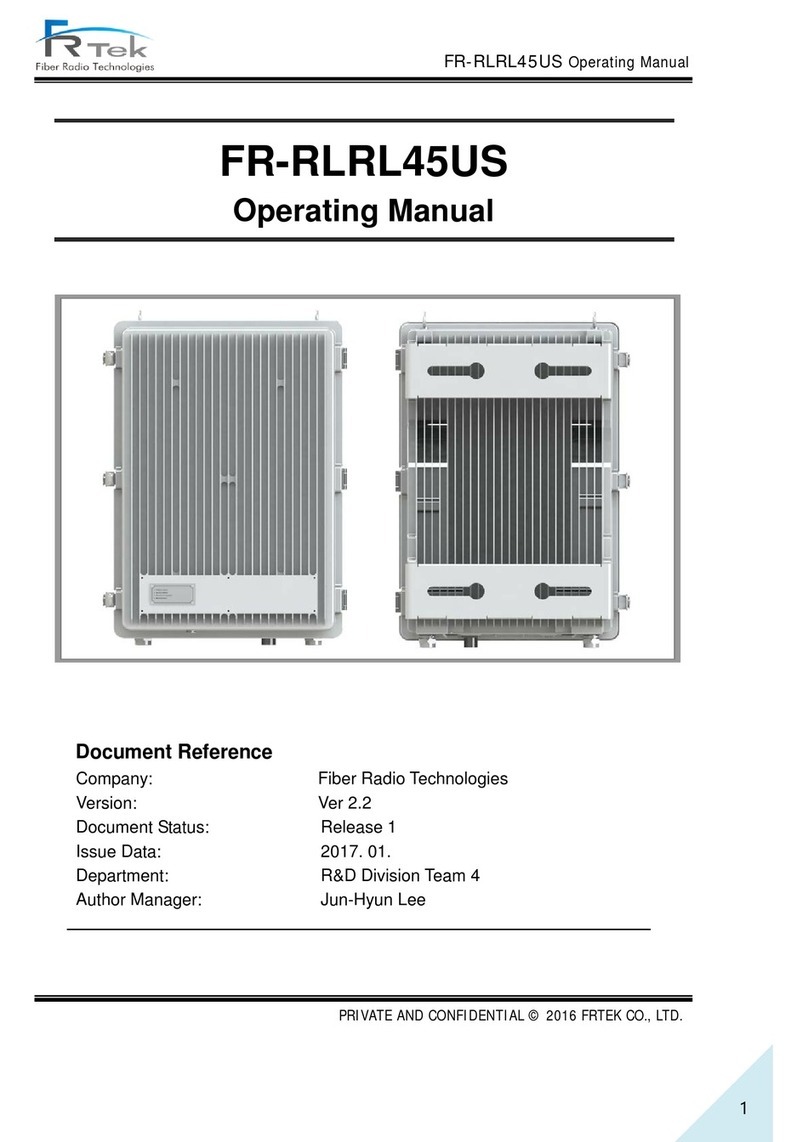
FRTek
FRTek FR-RLRL45US operating manual

MSA
MSA DR-309 operating manual
